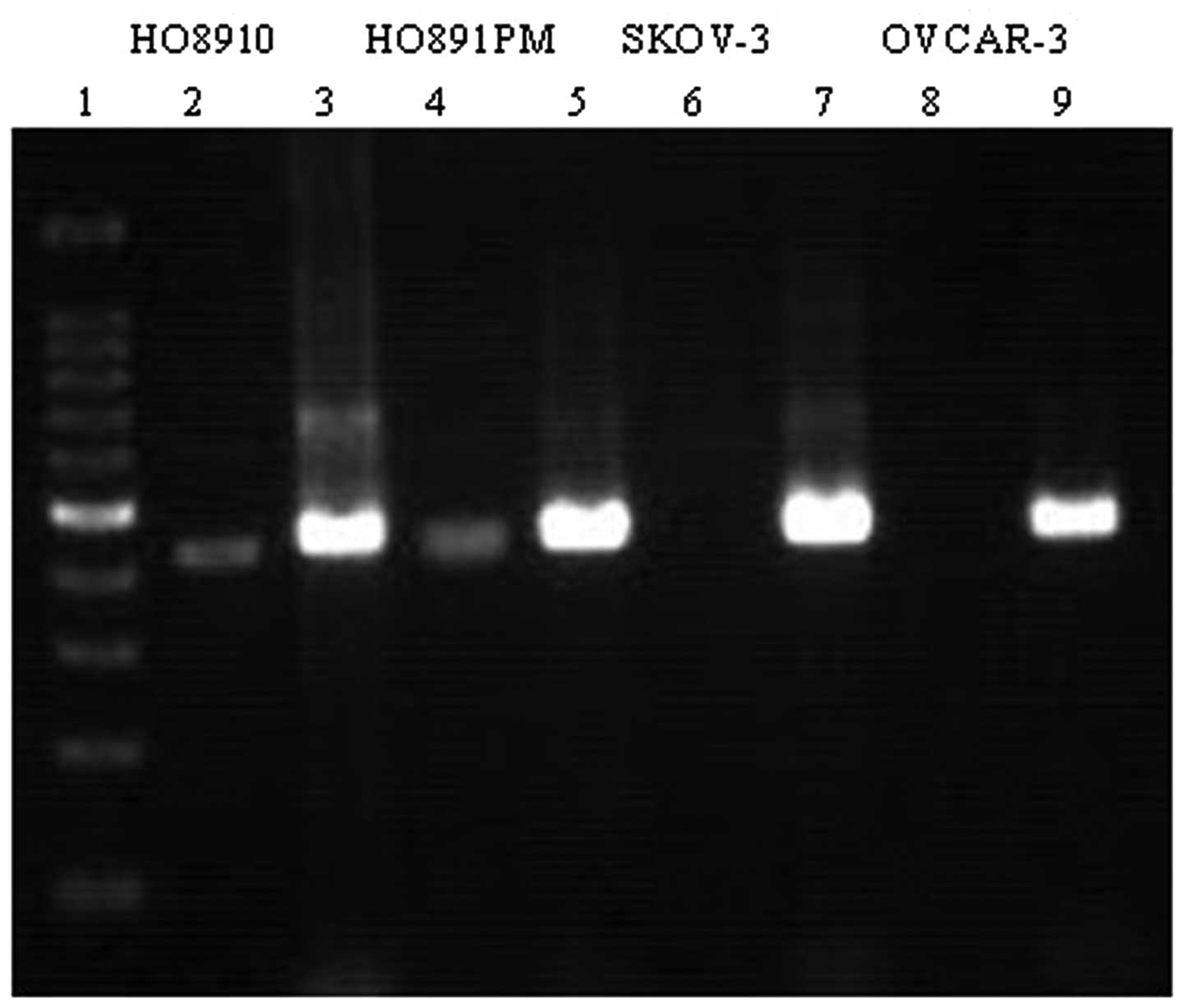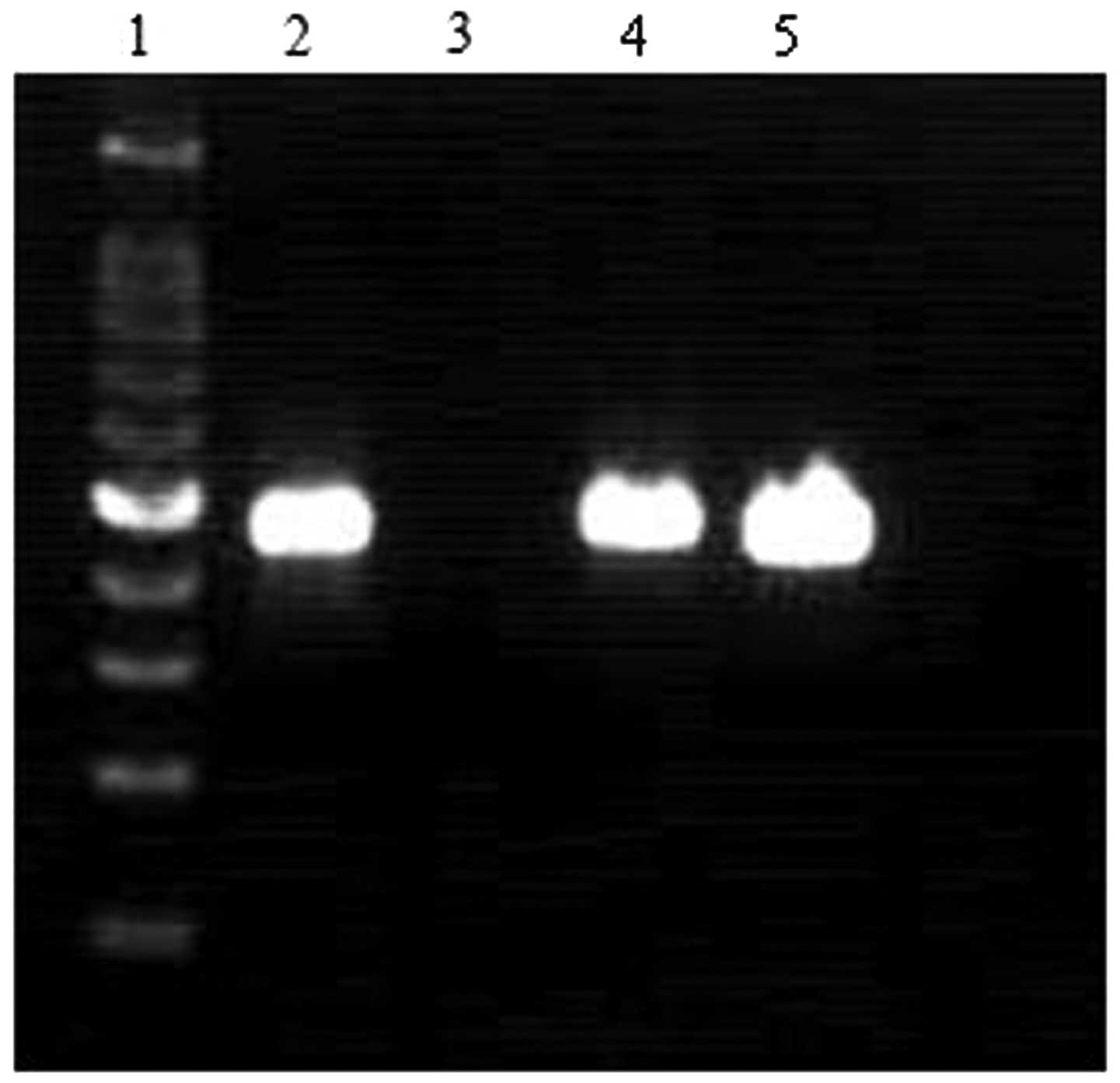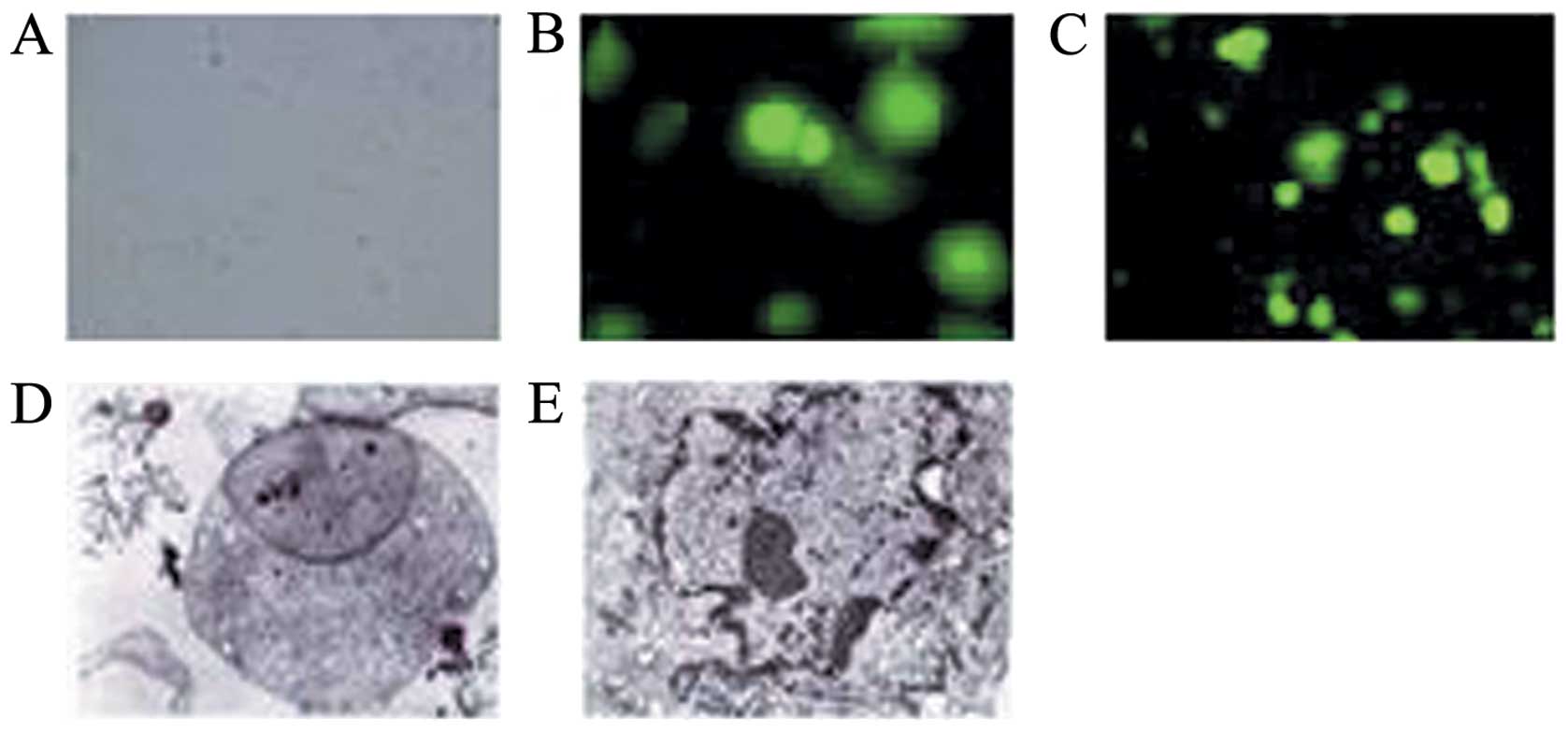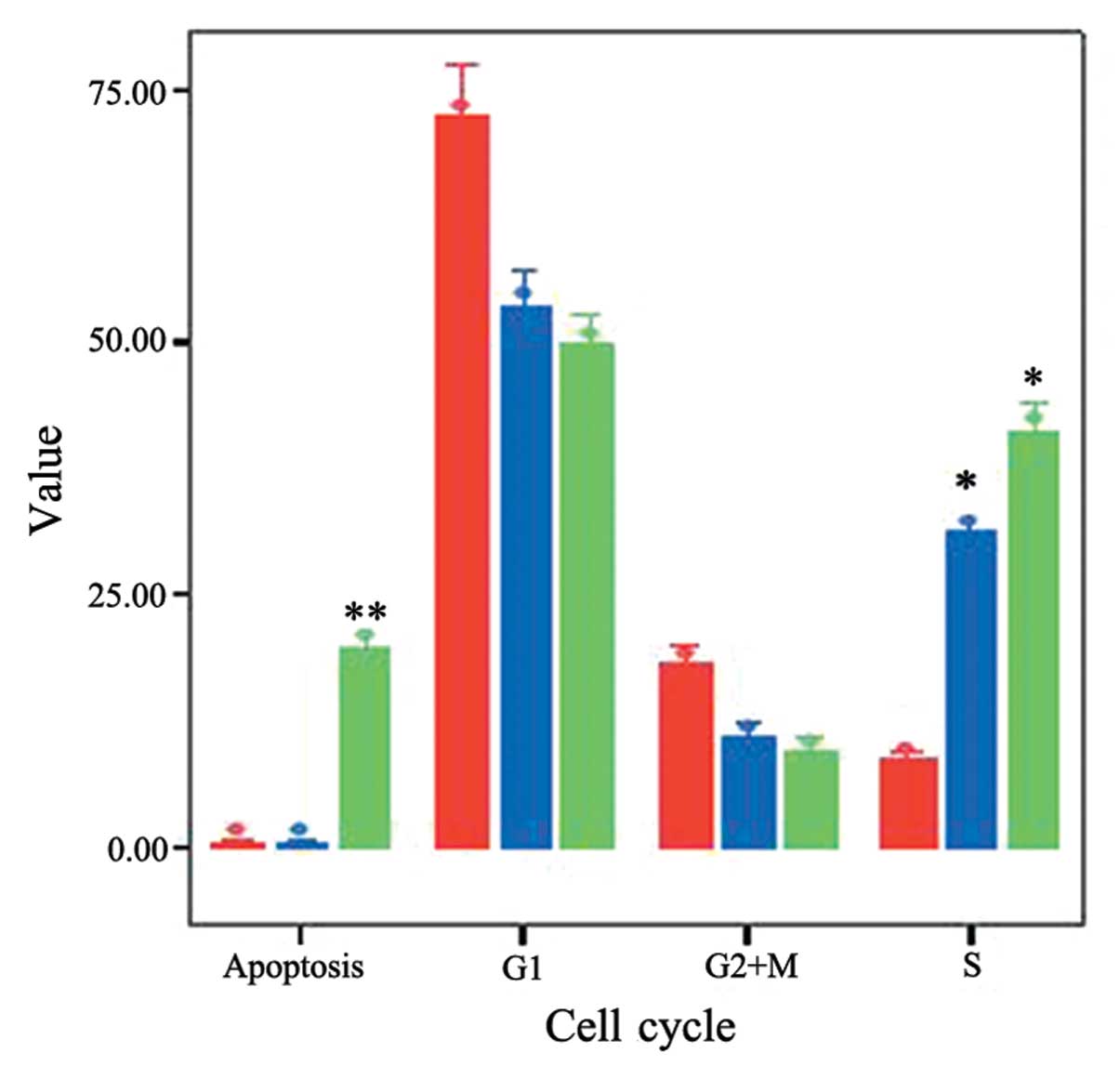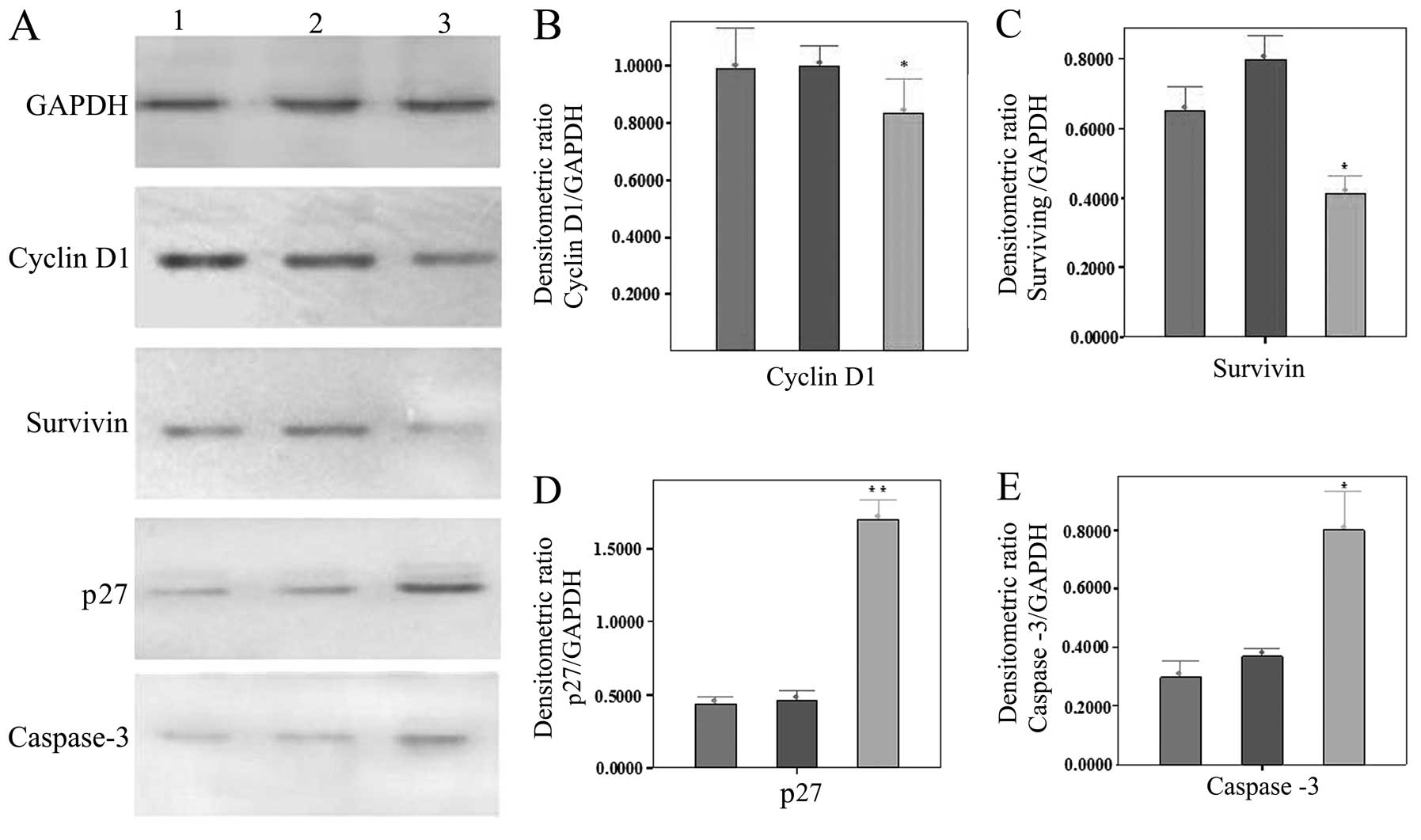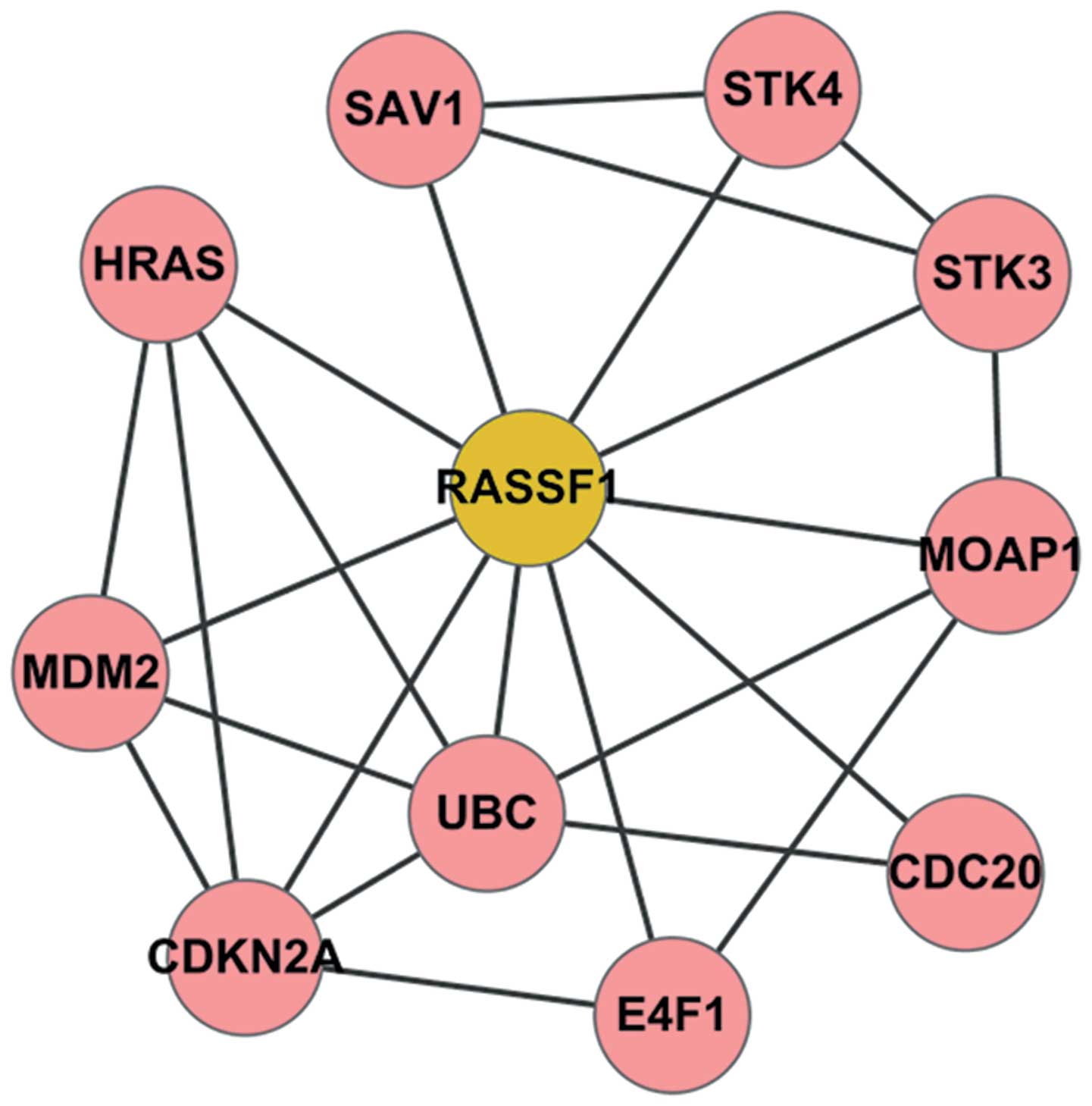|
1
|
Yap TA, Carden CP and Kaye SB: Beyond
chemotherapy: targeted therapies in ovarian cancer. Nat Rev Cancer.
9:167–181. 2009. View
Article : Google Scholar : PubMed/NCBI
|
|
2
|
Buys SS, Partridge E, Black A, et al:
Effect of screening on ovarian cancer mortality: the prostate,
lung, colorectal and ovarian (PLCO) cancer screening randomized
controlled trial. JAMA. 305:2295–2303. 2011. View Article : Google Scholar : PubMed/NCBI
|
|
3
|
Vaughan S, Coward JI, Bast RCJC, et al:
Rethinking ovarian cancer: recommendations for improving outcomes.
Nat Rev Cancer. 11:719–725. 2011. View
Article : Google Scholar : PubMed/NCBI
|
|
4
|
Moore RG, Miller MC, Eklund EE, Lu KH,
Bast RC Jr and Lambert-Messerlian G: Serum levels of the ovarian
cancer biomarker HE4 are decreased in pregnancy and increase with
age. Am J Obstet Gynecol. 206:349.e341–e347. 2012.PubMed/NCBI
|
|
5
|
Nosov V, Su F, Amneus M, et al: Validation
of serum biomarkers for detection of early-stage ovarian cancer. Am
J Obstet Gynecol. 200:639.e631–e635. 2009.PubMed/NCBI
|
|
6
|
Weiland F, Martin K, Oehler MK and
Hoffmann P: Deciphering the molecular nature of ovarian cancer
biomarker CA125. Int J Mol Sci. 13:10568–10582. 2012. View Article : Google Scholar : PubMed/NCBI
|
|
7
|
Yee KS, Grochola L, Hamilton G, et al: A
RASSF1A polymorphism restricts p53/p73 activation and associates
with poor survival and accelerated age of onset of soft tissue
sarcoma. Cancer Res. 72:2206–2217. 2012. View Article : Google Scholar : PubMed/NCBI
|
|
8
|
Donninger H, Barnoud T, Nelson N, et al:
RASSF1A and the rs2073498 cancer associated SNP. Front oncol.
1:542011. View Article : Google Scholar : PubMed/NCBI
|
|
9
|
Kassler S, Donninger H, Birrer MJ and
Clark GJ: RASSF1A and the taxol response in ovarian cancer. Mol
Biol Int. 2012:2632672012. View Article : Google Scholar : PubMed/NCBI
|
|
10
|
Liu L, Kron KJ, Pethe VV, et al:
Association of tissue promoter methylation levels of APC, TGFβ2,
HOXD3 and RASSF1A with prostate cancer progression. Int J Cancer.
129:2454–2462. 2011.PubMed/NCBI
|
|
11
|
Brait M, Loyo M, Rosenbaum E, et al:
Correlation between BRAF mutation and promoter methylation of
TIMP3, RARβ2 and RASSF1A in thyroid cancer. Epigenetics. 7:710–719.
2012.PubMed/NCBI
|
|
12
|
Kloten V, Becker B, Winner K, et al:
Promoter hypermethylation of the tumor-suppressor genes ITIH5,
DKK3, and RASSF1A as novel biomarkers for blood-based breast cancer
screening. Breast Cancer Res. 15:R42013. View Article : Google Scholar : PubMed/NCBI
|
|
13
|
Senchenko VN, Anedchenko EA, Kondratieva
TT, et al: Simultaneous down-regulation of tumor suppressor genes
RBSP3/CTDSPL, NPRL2/G21 and RASSF1A in primary non-small cell lung
cancer. BMC cancer. 10:752010. View Article : Google Scholar : PubMed/NCBI
|
|
14
|
Yi M, Yang J, Chen X, et al: RASSF1A
suppresses melanoma development by modulating apoptosis and
cell-cycle progression. J Cell Physiol. 226:2360–2369. 2011.
View Article : Google Scholar : PubMed/NCBI
|
|
15
|
Amin KS and Banerjee PP: The cellular
functions of RASSF1A and its inactivation in prostate cancer. J
Carcinog. 11:32012. View Article : Google Scholar : PubMed/NCBI
|
|
16
|
Laird PW: Principles and challenges of
genomewide DNA methylation analysis. Nat Rev Genet. 11:191–203.
2010. View
Article : Google Scholar : PubMed/NCBI
|
|
17
|
Oh JH, Craft JM, Townsend R, Deasy JO,
Bradley JD and El Naqa I: A bioinformatics approach for biomarker
identification in radiation-induced lung inflammation from limited
proteomics data. J Proteome Res. 10:1406–1415. 2011. View Article : Google Scholar : PubMed/NCBI
|
|
18
|
Goertsches RH, Zettl UK and Hecker M:
Sieving treatment biomarkers from blood gene-expression profiles: a
pharmacogenomic update on two types of multiple sclerosis therapy.
Pharmacogenomics. 12:423–432. 2011. View Article : Google Scholar : PubMed/NCBI
|
|
19
|
Kruger NJ: The Bradford method for protein
quantitation. The Protein Protocols Handbook. Springer; New York,
NY: pp. 17–24. 2009, View Article : Google Scholar
|
|
20
|
Chang C, Zhang C, Zhao X, Kuang X, Tang H
and Xiao X: Differential regulation of mitogen-activated protein
kinase signaling pathways in human with different types of mitral
valvular disease. J Surg Res. 181:49–59. 2013. View Article : Google Scholar
|
|
21
|
Bowen NJ, Walker LD, Matyunina LV, et al:
Gene expression profiling supports the hypothesis that human
ovarian surface epithelia are multipotent and capable of serving as
ovarian cancer initiating cells. BMC Med Genomics. 2:712009.
View Article : Google Scholar
|
|
22
|
Russell LJ, Capasso M, Vater I, et al:
Deregulated expression of cytokine receptor gene, CRLF2, is
involved in lymphoid transformation in B-cell precursor acute
lymphoblastic leukemia. Blood. 114:2688–2698. 2009. View Article : Google Scholar : PubMed/NCBI
|
|
23
|
Szklarczyk D, Franceschini A, Kuhn M, et
al: The STRING database in 2011: functional interaction networks of
proteins, globally integrated and scored. Nucleic Acids Res.
39:D561–D568. 2011. View Article : Google Scholar : PubMed/NCBI
|
|
24
|
Shannon P, Markiel A, Ozier O, et al:
Cytoscape: a software environment for integrated models of
biomolecular interaction networks. Genome Res. 13:2498–2504. 2003.
View Article : Google Scholar : PubMed/NCBI
|
|
25
|
Huang da W, Sherman BT and Lempicki RA:
Systematic and integrative analysis of large gene lists using DAVID
bioinformatics resources. Nat Protoc. 4:44–57. 2009.PubMed/NCBI
|
|
26
|
Kanehisa M, Goto S, Furumichi M, Tanabe M
and Hirakawa M: KEGG for representation and analysis of molecular
networks involving diseases and drugs. Nucleic Acids Res.
38:D355–D360. 2010. View Article : Google Scholar : PubMed/NCBI
|
|
27
|
Kipps E, Tan DS and Kaye SB: Meeting the
challenge of ascites in ovarian cancer: new avenues for therapy and
research. Nat Rev Cancer. 13:273–282. 2013. View Article : Google Scholar : PubMed/NCBI
|
|
28
|
Patankar NA, Pritchard J, Van Grinsven M,
Osooly M and Bally MB: Topotecan and doxorubicin combination to
treat recurrent ovarian cancer: the influence of drug exposure time
and delivery systems to achieve optimum therapeutic activity. Clin
Cancer Res. 19:865–877. 2013. View Article : Google Scholar
|
|
29
|
Pan Y, Du Zhen-Wu D, Zhou JW, et al:
MicroRNA-mediated silencing of RhoC inhibits tumor invasion and
increases chemosensitivity to paclitaxel in SKOV3 cells in vitro.
Chem Res Chin Univ. 27:70–74. 2011.
|
|
30
|
Hergovich A and Hemmings BA: Hippo
signalling in the G2/M cell cycle phase: lessons learned from the
yeast MEN and SIN pathways. Semin Cell Dev Biol. 23:794–802. 2012.
View Article : Google Scholar : PubMed/NCBI
|
|
31
|
Matallanas D, Romano D, Yee K, et al:
RASSF1A elicits apoptosis through an MST2 pathway directing
proapoptotic transcription by the p73 tumor suppressor protein. Mol
Cell. 27:962–975. 2007. View Article : Google Scholar : PubMed/NCBI
|
|
32
|
Jirawatnotai S, Hu Y, Michowski W, et al:
A function for cyclin D1 in DNA repair uncovered by protein
interactome analyses in human cancers. Nature. 474:230–234. 2011.
View Article : Google Scholar : PubMed/NCBI
|
|
33
|
Cheung CH, Cheng L, Chang KY, Chen HH and
Chang JY: Investigations of survivin: the past, present and future.
Front Biosci (Landmark Ed). 16:952–961. 2010. View Article : Google Scholar : PubMed/NCBI
|
|
34
|
Chu IM, Hengst L and Slingerland JM: The
Cdk inhibitor p27 in human cancer: prognostic potential and
relevance to anticancer therapy. Nat Rev Cancer. 8:253–267. 2008.
View Article : Google Scholar : PubMed/NCBI
|
|
35
|
Larsen BD, Rampalli S, Burns LE, Brunette
S, Dilworth FJ and Megeney LA: Caspase 3/caspase-activated DNase
promote cell differentiation by inducing DNA strand breaks. Proc
Natl Acad Sci USA. 107:4230–4235. 2010. View Article : Google Scholar : PubMed/NCBI
|
|
36
|
Bennani-Baiti IM: Epigenetic and
epigenomic mechanisms shape sarcoma and other mesenchymal tumor
pathogenesis. Epigenomics. 3:715–732. 2011. View Article : Google Scholar : PubMed/NCBI
|
|
37
|
Sun XF, Li L, Li XJ and Shen W:
Methylation pattern of oncogene HRAS gene promoter region and its
clinical relevance to urocystic tumorigenesis. Mol Biol Rep.
39:8431–8437. 2012. View Article : Google Scholar : PubMed/NCBI
|
|
38
|
Liu L, Baier K, Dammann RH and Pfeifer GP:
The tumor suppressor RASSF1A does not interact with Cdc20, an
activator of the anaphase-promoting complex. Cell Cycle.
6:1663–1665. 2007. View Article : Google Scholar : PubMed/NCBI
|
|
39
|
Kim JS, Chae Y, Ha YS, et al: Ras
association domain family 1A: a promising prognostic marker in
recurrent nonmuscle invasive bladder cancer. Clin Genitourin
Cancer. 10:114–120. 2012. View Article : Google Scholar : PubMed/NCBI
|
|
40
|
Del Re DP and Sadoshima J: RASSF1A
Signaling in the heart: novel functions beyond tumor suppression.
Mol Biol Int. 2012:1542832012.PubMed/NCBI
|















